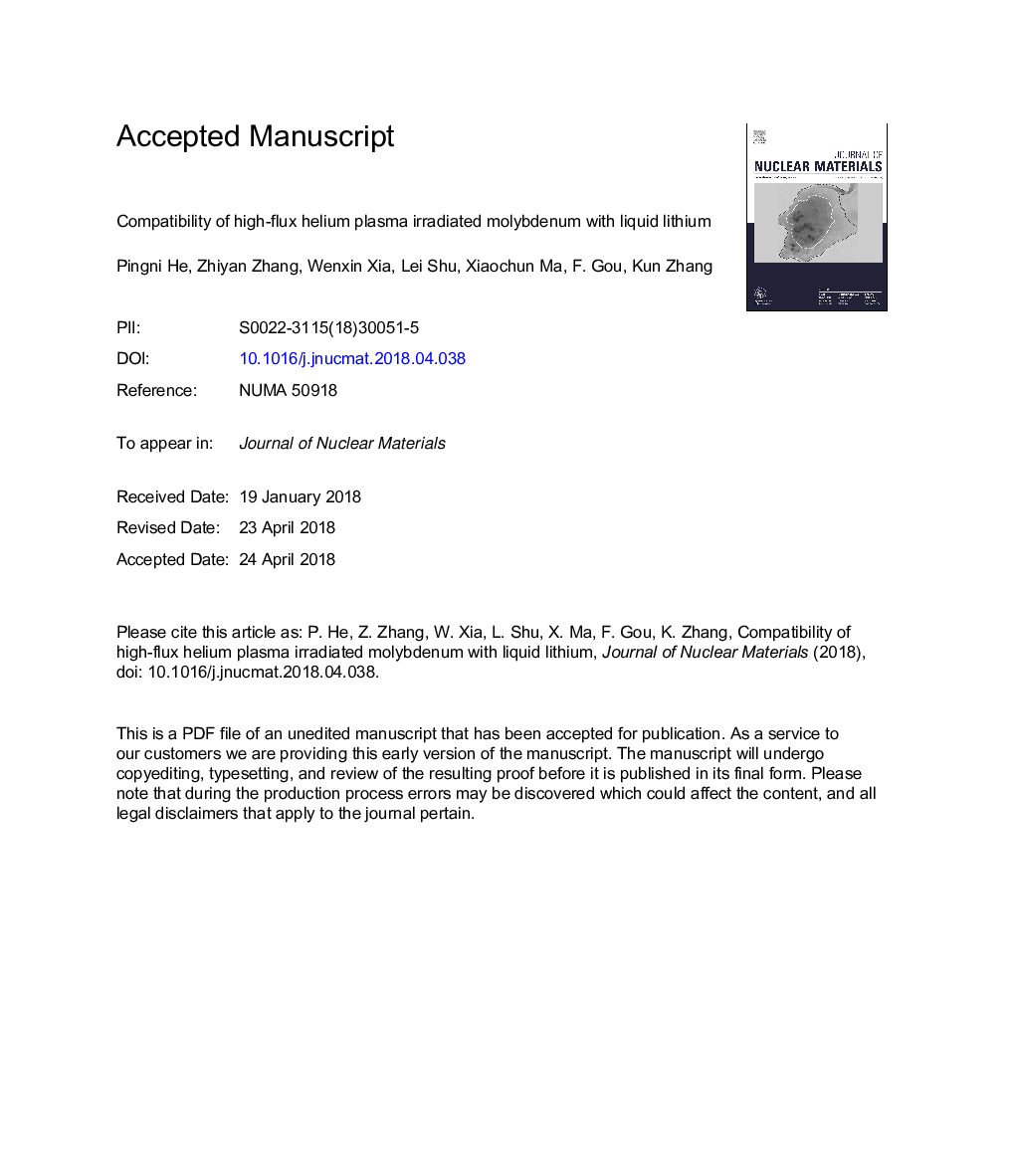| Article ID | Journal | Published Year | Pages | File Type |
|---|---|---|---|---|
| 11006998 | Journal of Nuclear Materials | 2018 | 22 Pages |
Abstract
In this work, the effects of high-flux helium plasma irradiation on the wetting and corrosion behaviors of liquid lithium on molybdenum surfaces were investigated. A nano-fuzz layer with inhomogeneous nano-voids was formed on the surface of each molybdenum specimen after exposure to the helium plasma at a constant flux of 5â¯Ãâ¯1022 ions mâ2sâ1 up to different fluences. The results of wettability test indicated that the nano-fuzz degraded the wettability of liquid lithium on the surface of irradiated molybdenum. After immersion in liquid lithium for 1350â¯hâ¯at 623â¯K, molybdenum showed slight corrosion regardless of exposure to plasma or not. A carburized layer including Mo2C was formed on the surface region of molybdenum after the corrosion test. The diffusion of carbon to bulk was suppressed by the fuzz layer. Furthermore, the carburization of surface increased the hardness of molybdenum surface.
Related Topics
Physical Sciences and Engineering
Energy
Nuclear Energy and Engineering
Authors
Pingni He, Zhiyan Zhang, Wenxin Xia, Lei Shu, Xiaochun Ma, F. Gou, Kun Zhang,
